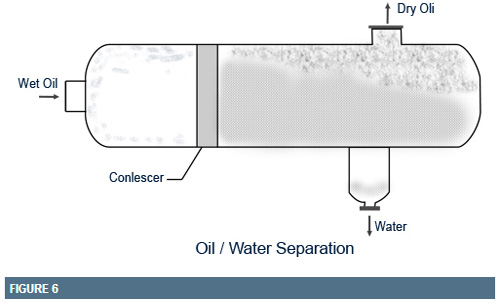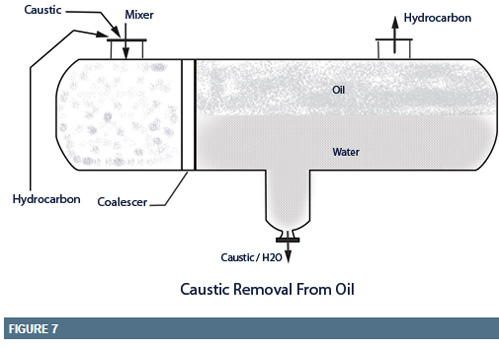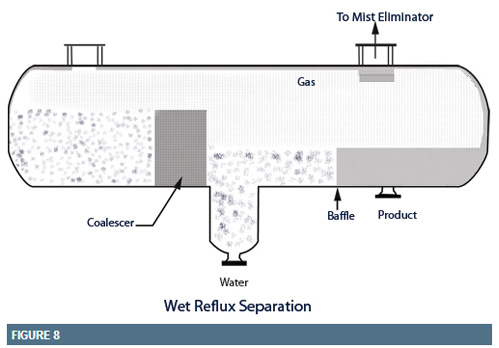Liquid-liquid separation technology can solve a wide range of separation problems involving immiscible liquids. Whether it is capacity constraints, loss of valuable solvents or more stringent environmental compliance,
Sumit Industries can help you meet these requirements. Sumit Industries offers different types of coalescer media and has solutions for even the most difficult to separate applications.
Environmental constraints are pushing the CPI separators to capacity and efficiency limits. Coalescer packs can be retrofitted to upgrade existing separators giving them more capacity and higher efficiency. Oil/water separating efficiencies to less than 15ppm are common with Sumit Industries.
This Liquid-Liquid Coalescer describes the use of various media and methods to increase plant productivity. Typical applications include:
When two liquids are immiscible, or non-soluble in one another, they can form either an emulsion or a colloidal suspension. In either of these mixtures, the dispersed liquid forms droplets in the continuous phase. In a suspension, the droplets are less than one micron in diameter and the liquids cannot readily be separated with the technologies described here. Fortunately, in the chemical hydrocarbon process industries droplet sizes are typically greater than this and/or the purities required can be achieved without addressing the ultra-light colloidal component of the stream
GravitySeparation Downstream of a Coalescer Element
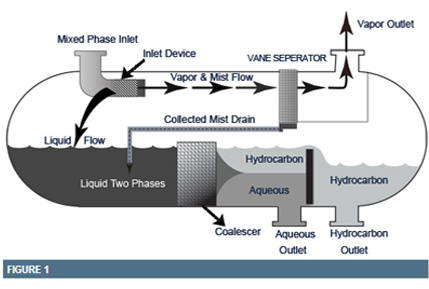
Successful gravity separation downstream of a coalescer element depends primarily on vessel geometry. Various schemes are used with horizontal vessels depending on whether there is a significant amount of gas present as with Three-Phase Separators (Fig.1) and/or the volume percent of the dispersed phase. The formation of a wedge between a coalescer and a sharp interface level as seen in (Fig. 2)is well documented. A boot is desirable when the amount of dispersed phase is <15% v/v (Fig.3) where the control of the interface level is linear with the volume of dispersed phase discharged. A dispersed phase velocity of 12 inches/min [ 300 mm)/minute ]is desirable to allow disengagement of the continuous phase, while keeping the boot diameter <40% of the diameter of the horizontal portion to minimize the necessity for weld pads. The most common applications for coalescers in vertical flow are extraction/liquid-liquid absorption towers (Fig. 4) and entrainment knockout installations (Fig.5) where the available plot plans in the plant are at a premium .The coalescer is located downstream of the interface so that entrained continuous phase is removed from the dispersed.. In pressure vessels with full diameter coalescers such as those shown in Figures 2 and 3, it is important economically to keep the L/D ratio in the range of 3 to 5.
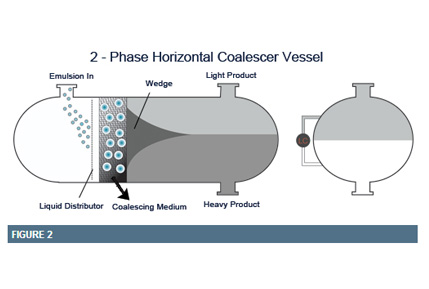
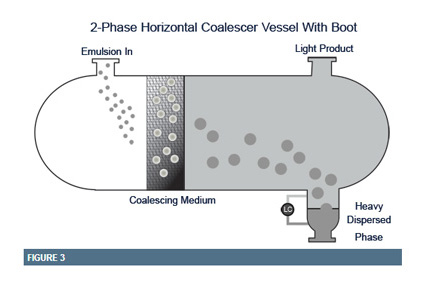
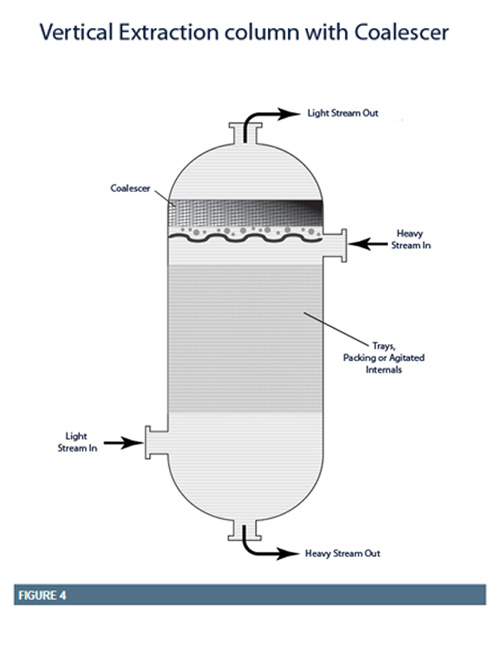
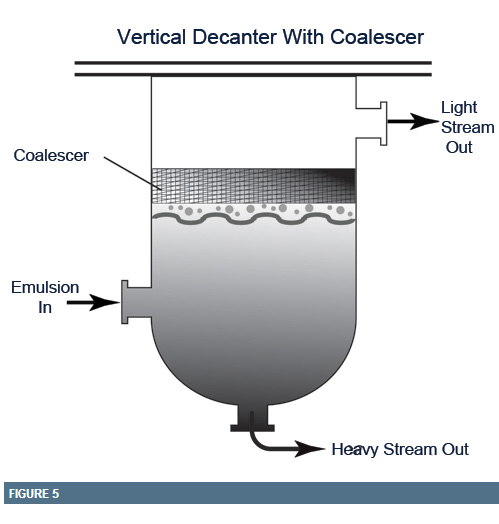
The successful design of a liquid-liquid coalescer starts with knowledge of the source of the emulsion and the stream’s physical properties. It has been concluded that a combination of empirical experience and analytical modeling of available coalescing media based on removal of 99.9% of a minimum droplet size can then be used to predict allowable entrainment concentrations in the effluent stream. Once the coalescer is properly located in an existing or new vessel a project that has a high rate of return is achieved that gives many years of reliable service.
COALESCER ConfigurationsSUMIT liquid / liquid coalescers have helped to solve many separation application involving immiscible liquids in various industries throughout the world .Whether any product losses ,capacity constrains in existing vessels ,SUMIT can help you to find the solution . SUMIT offer a range of coalesres media ,which are carefully chosen to your individual application depending on the liquid droplet sizes and interfacial surface tension involved Typically dispersion containing larger droplets that will readily wet a surface and easily settle under gravity only require a plate or mesh type coalscer .Dispersions containing fine droplets that do not readily wet a surface not readily settle under gravity generally require a fibrous cartridge filter coalescer .Droplet dispersions that are sized in between fine and large ,can be treated with co –knit multimesh type coalscers using two dissimilar materials. ( fiber and metal mesh)
Range of Coalescers